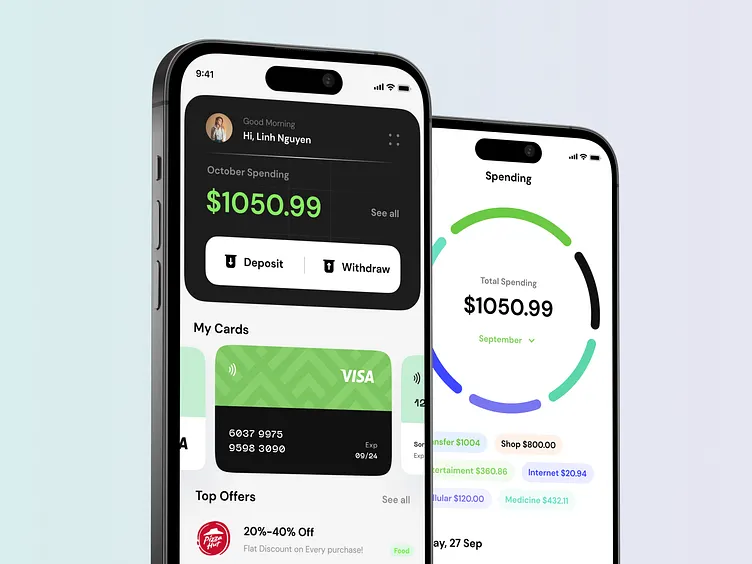A calm payment experience on mobile feels like a lightweight app that still works when networks wobble. Users shaped by older Android builds favor pages that load fast, spell out limits, and save steps for later. When payout rules, timelines, and receipts live in one tidy route, attention stays steady and sessions end on schedule – the same comfort a lean media app gives during spotty 4G.
Old-Phone Habits That Improve Payment Pages
Readers who prefer legacy Android apps value small files, predictable buttons, and copy that describes exactly what will happen next. That mindset translates directly to payouts. Replace dense help centers with short, in-place notes near the amount field. State per-transaction minimums and caps where the thumb already rests. Expose daily and weekly ceilings without sending the user to a new tab. Localize timestamps and keep language plain. A low-friction cashier behaves like a familiar downloader – a single path, readable progress, and zero mystery about what the next tap triggers on a busy connection.
Practical context belongs close to the decision. Method-by-method windows, tiered speeds under a threshold, and the meaning of a status label should appear alongside the request form, not in a deep FAQ. For users who need current figures and rail-specific guidance before submitting, the live reference is available here. When posted windows match reality and the cashier repeats that same wording, the payout step becomes a short routine rather than a round of guesswork on a small screen.
Bandwidth Realities and Copy That Works
Low-bandwidth design favors short sentences, stable layouts, and components that do their job without animation. The cashier should defer heavy assets, render critical text first, and cache the last viewed state, so a dropped signal does not erase inputs. Replace vague banners with one paragraph that explains how limits interact – per-transaction caps versus daily ceilings – and show one example with local currency. If larger amounts move slower, say so next to the number field. A short, honest explanation removes the urge to edit requests repeatedly, which often resets internal timers and lengthens the wait.
Receipts, Logs, and Offline Trust
Older devices teach the value of visible files and simple histories. Payout UX should borrow that clarity by offering a single, downloadable receipt that consolidates amount, rail, reference ID, and posted window. An account ledger that separates deposits, bonuses, adjustments, and withdrawals turns reconciliation into a two-minute task. Keep email subjects neutral and identical to the action taken – “Withdrawal submitted” and “Withdrawal paid” – so statements, inbox, and ledger line up without decoding on a shared device. With these small guarantees, trust grows even when the session ends offline.
A single-screen payout record
The best record lives above the fold and answers three questions without scrolling: what was requested, where it is in the process, and what happens next. Show the current status with a plain verb, display the expected window in local time, and keep a copy-to-clipboard reference number in view. If support is needed, store chat transcripts in the same thread, so the user returns to one place for both state and history.
Android UX: Thumb Zones, Dark Mode, Quiet Alerts
Design that respects thumb reach reduces mis-taps during rush hours. Amount fields and rail selectors belong within the primary zone on mid-sized screens, with confirmation buttons that do not hide behind the keyboard. Dark mode should use high contrast so balances and limits remain legible at arm’s length. Push alerts must default to quiet and only trigger on meaningful changes – request accepted, payout posted, additional check required – never on marketing. A visible “log out all devices” control with last-seen timestamps provides a clean exit after phone upgrades or borrowed tablets, which keeps access predictable across older hardware.
A One-Week Plan for Fewer Support Chats
A short, repeatable routine turns posted limits into tools rather than obstacles. Begin with a modest amount that fits inside the faster lane for the chosen rail, and submit early in the local day. Let the cashier confirmation be the single source of truth, then record outcomes to see patterns that guide future requests. Over a few sessions, numbers settle into a rhythm that requires less attention and fewer tickets.
- Day 1–2: Test one rail with a small request and note posted window versus actual arrival.
- Day 3–4: Hold the amount under any speed threshold and confirm status wording matches the receipt and email.
- Day 5–7: Scale within daily caps, avoid edits after submission, and export the weekly ledger for a clean snapshot.
With low-bandwidth discipline – fast text first, limits beside inputs, receipts that behave like files – payment pages feel as reliable as a lean Android utility. Users can submit once, watch one status, and close the app with confidence that the record, the inbox, and the balance will tell the same story when the connection stabilizes.

